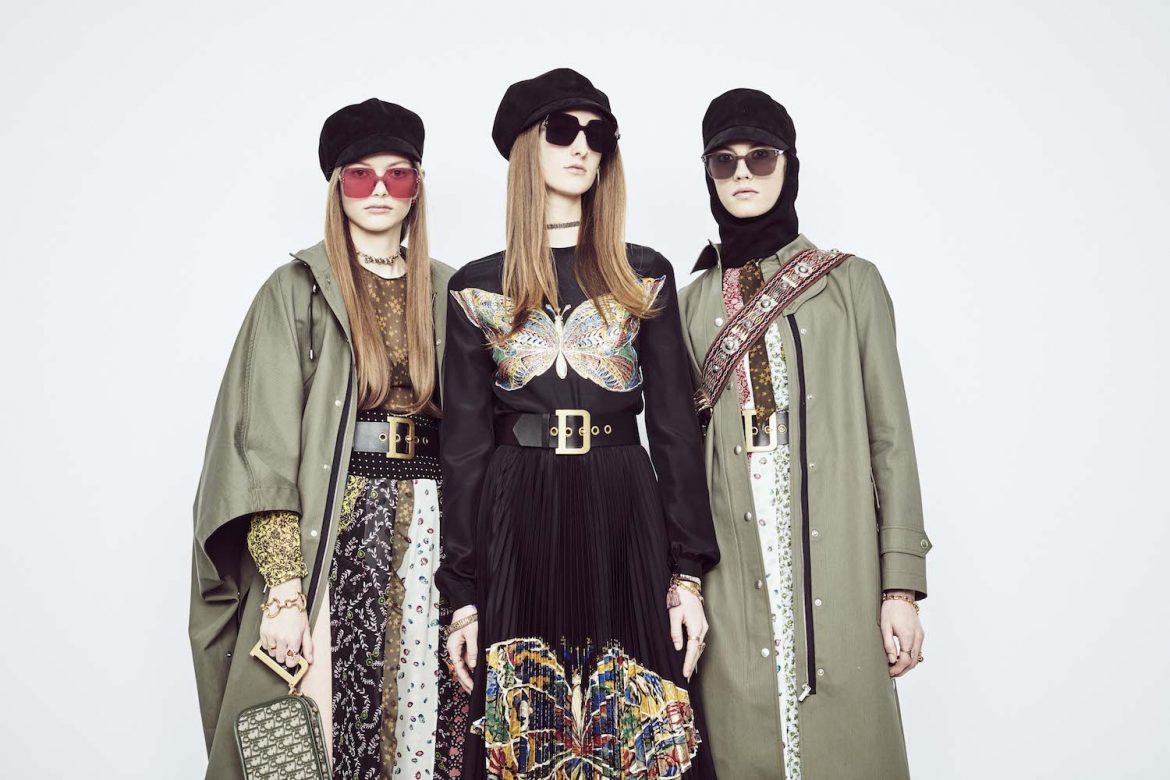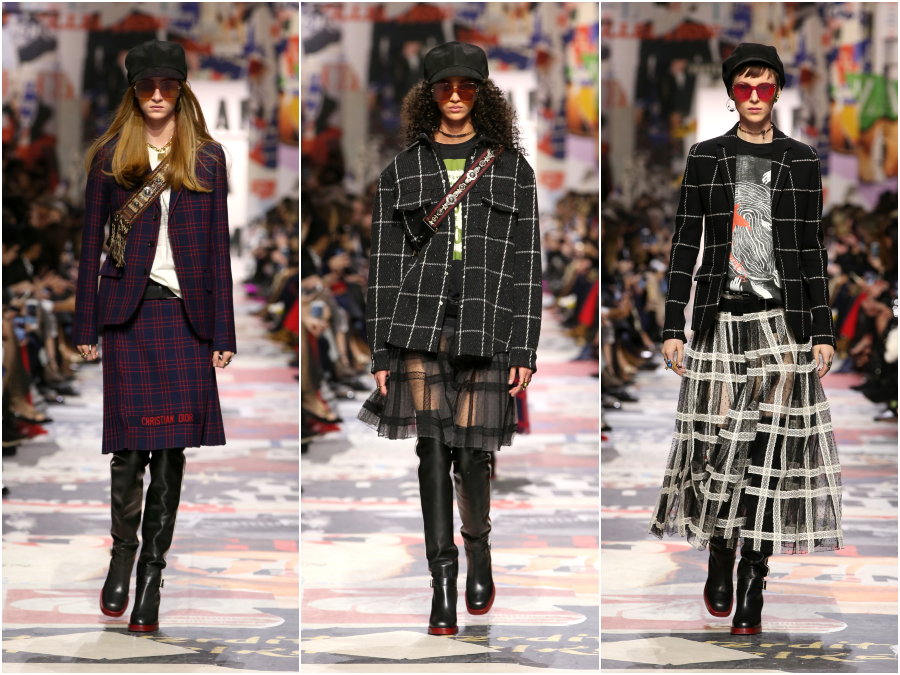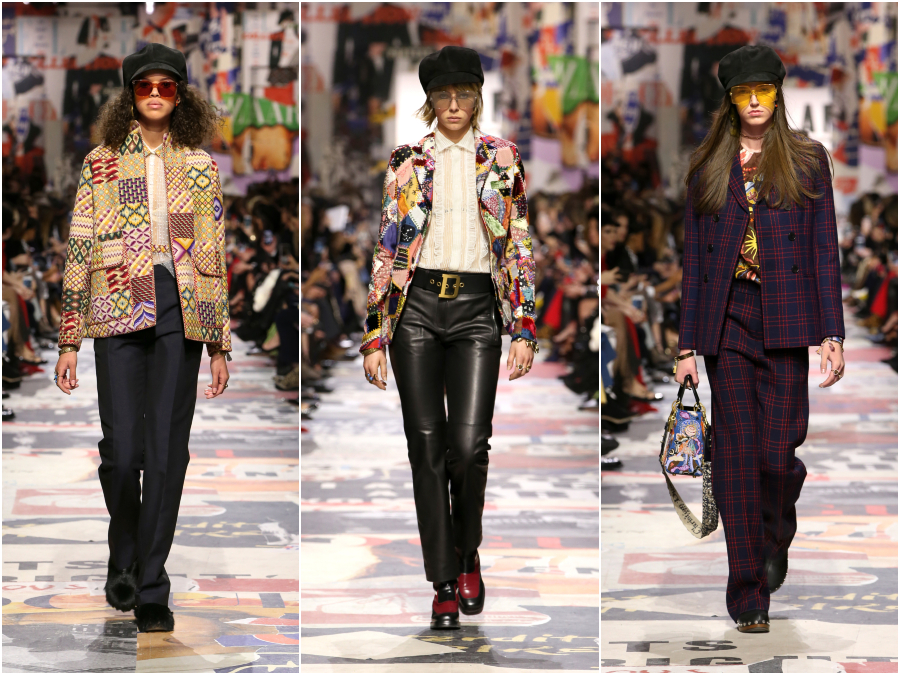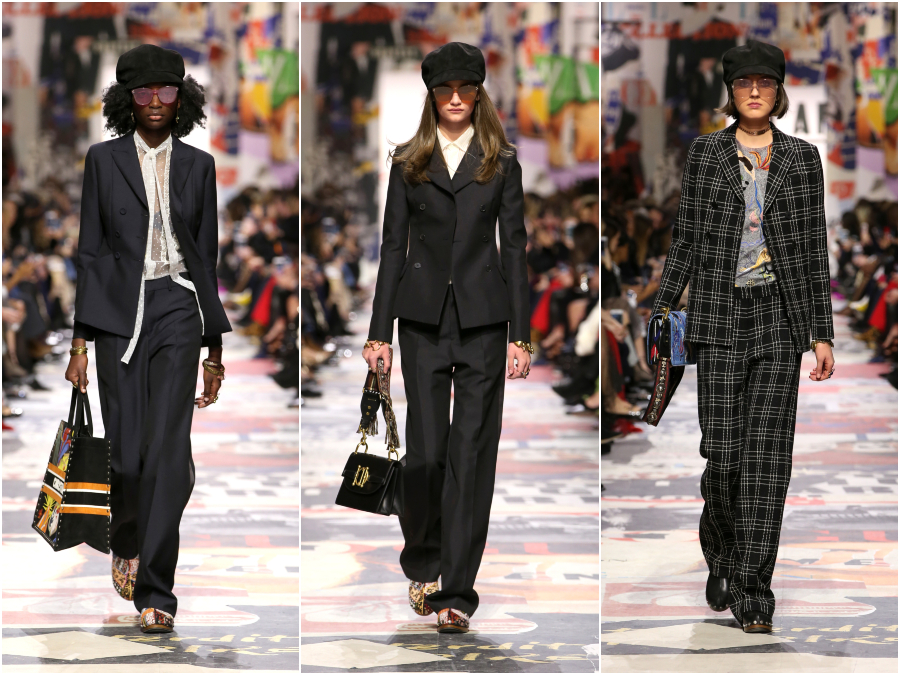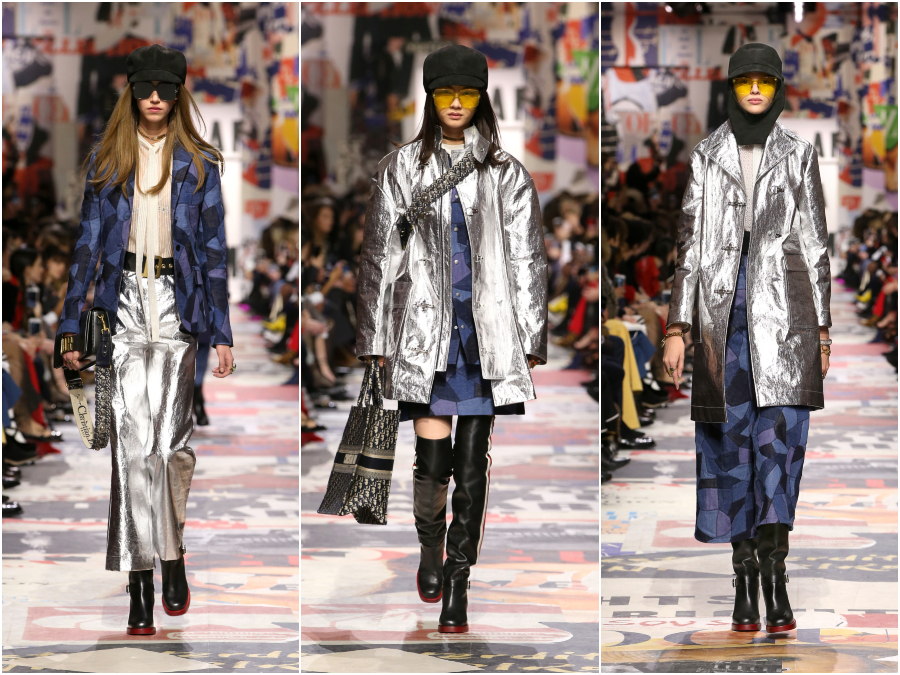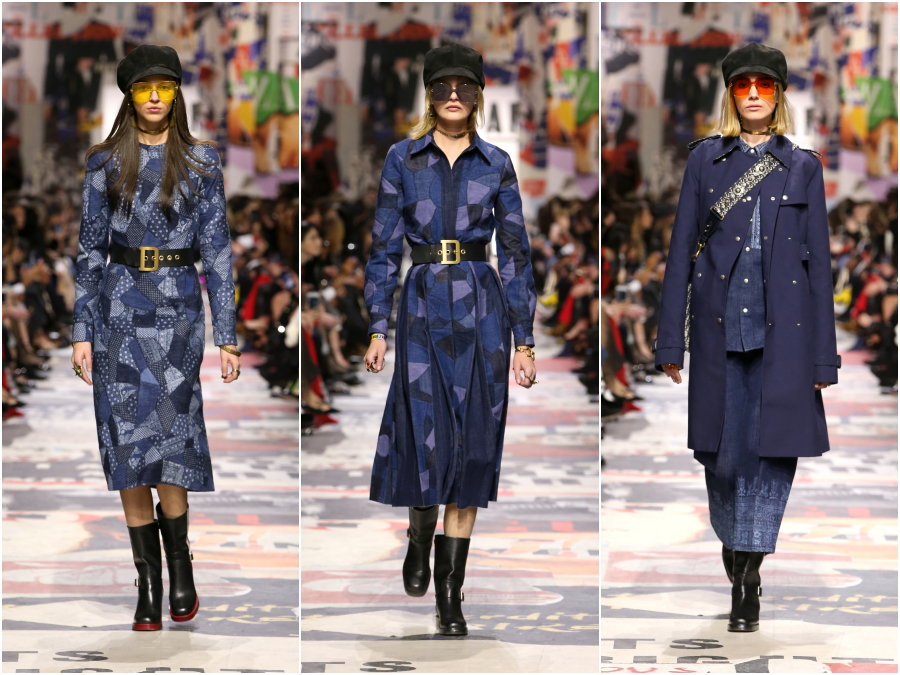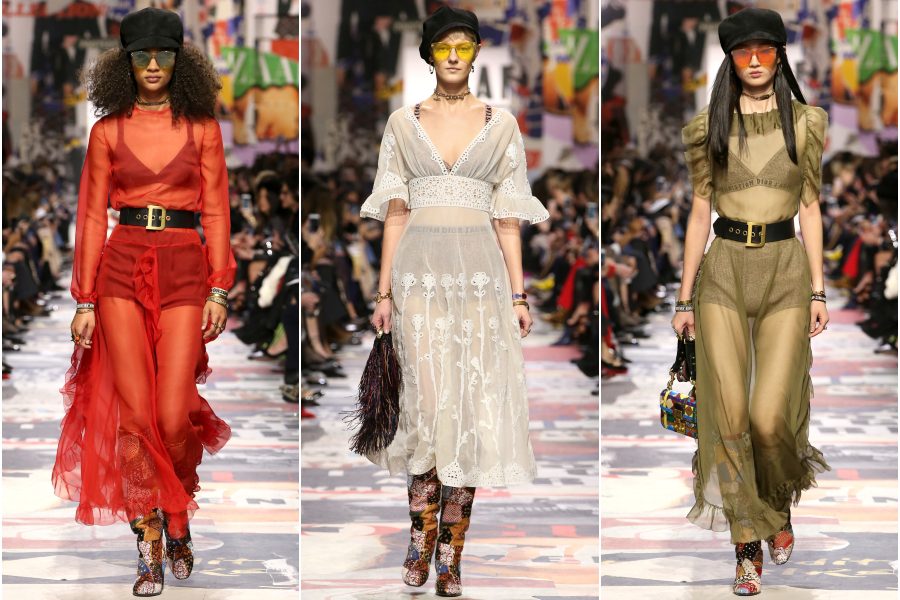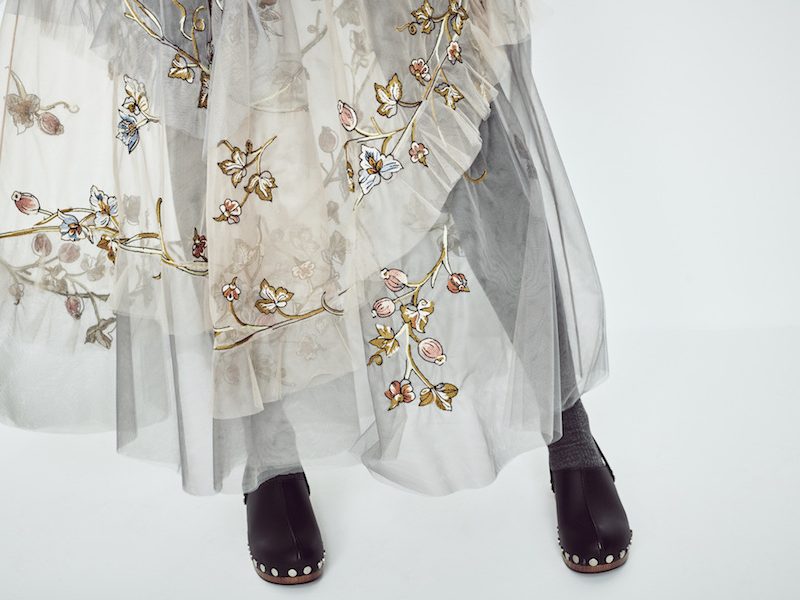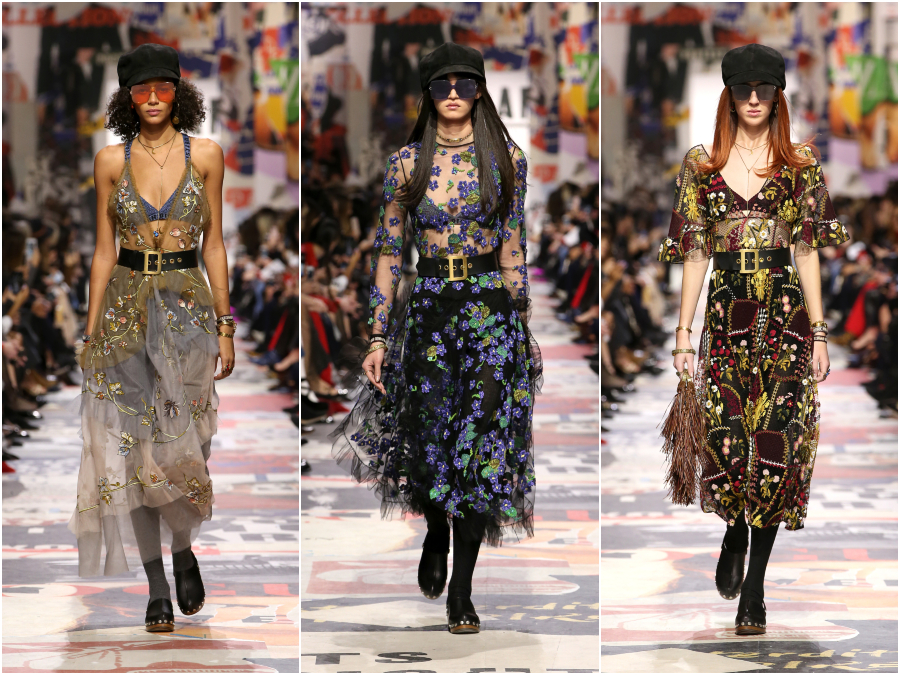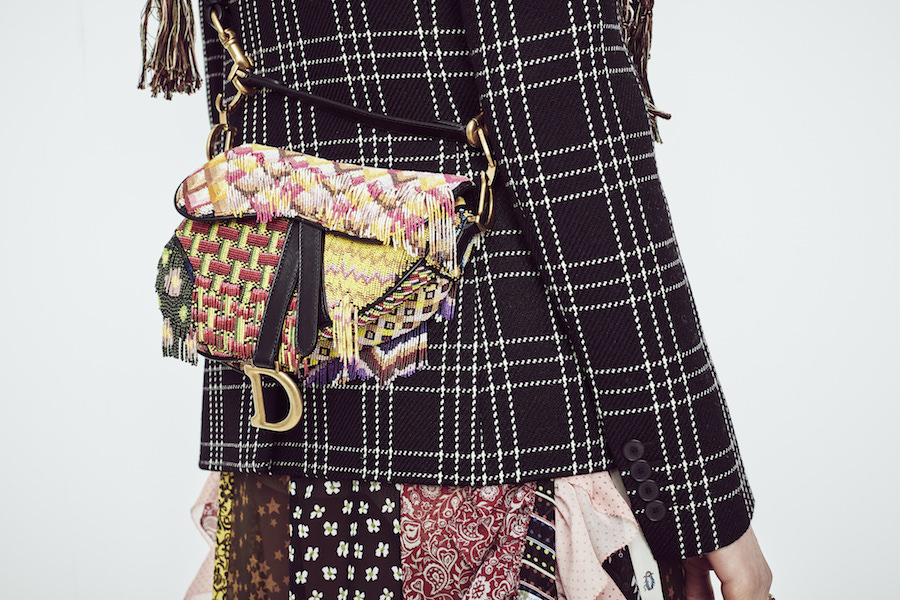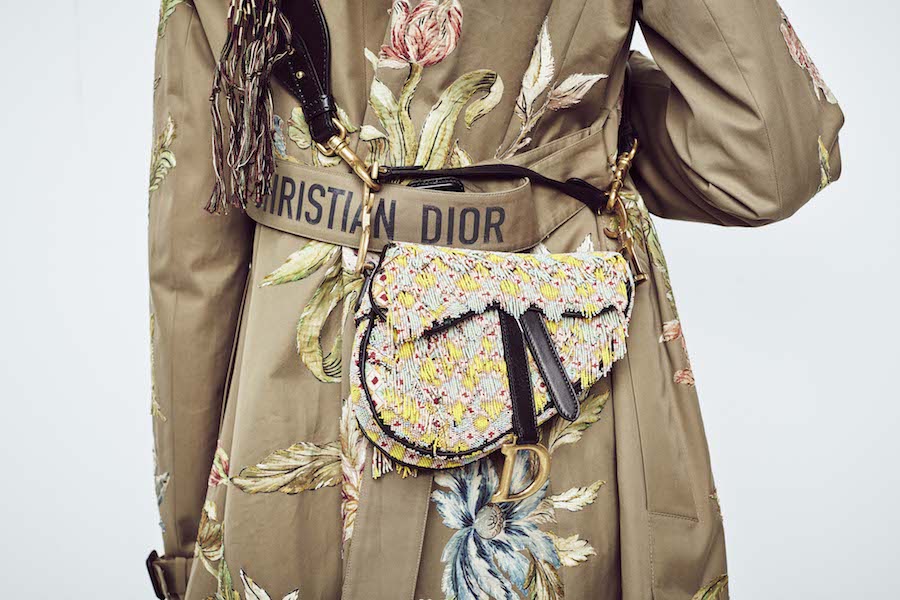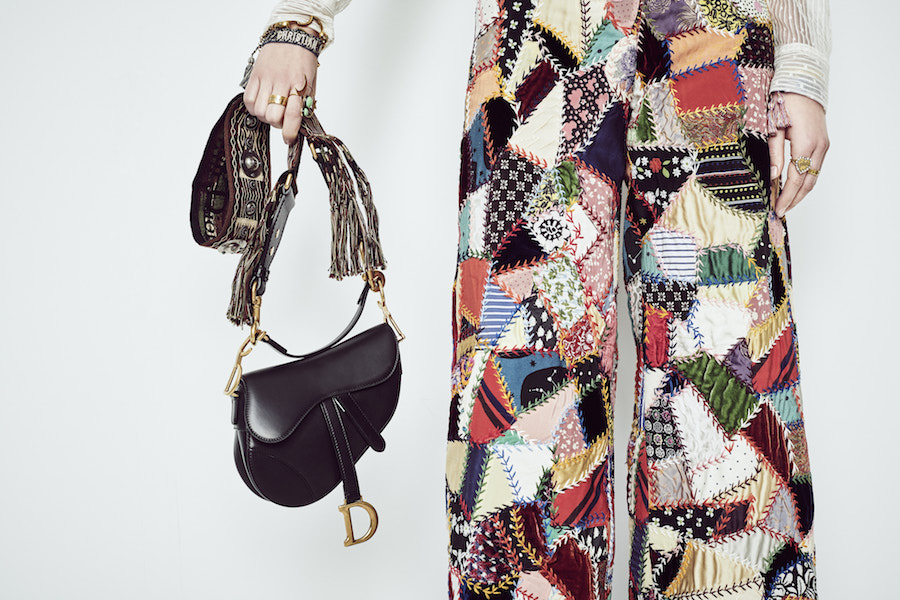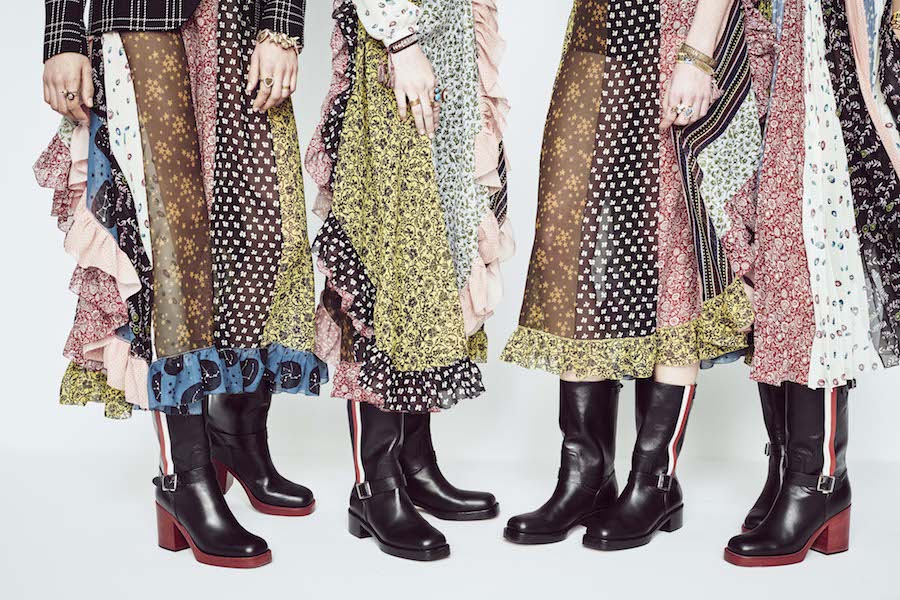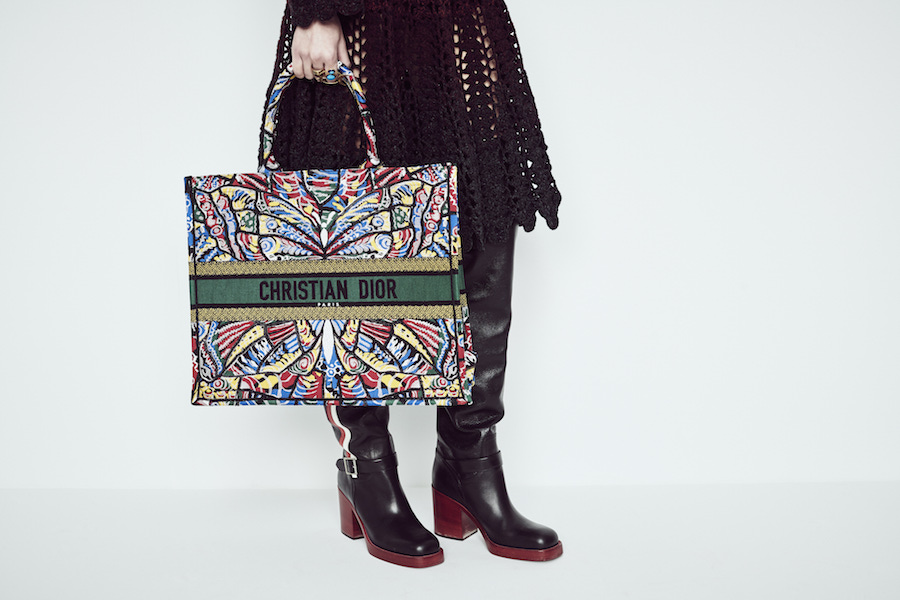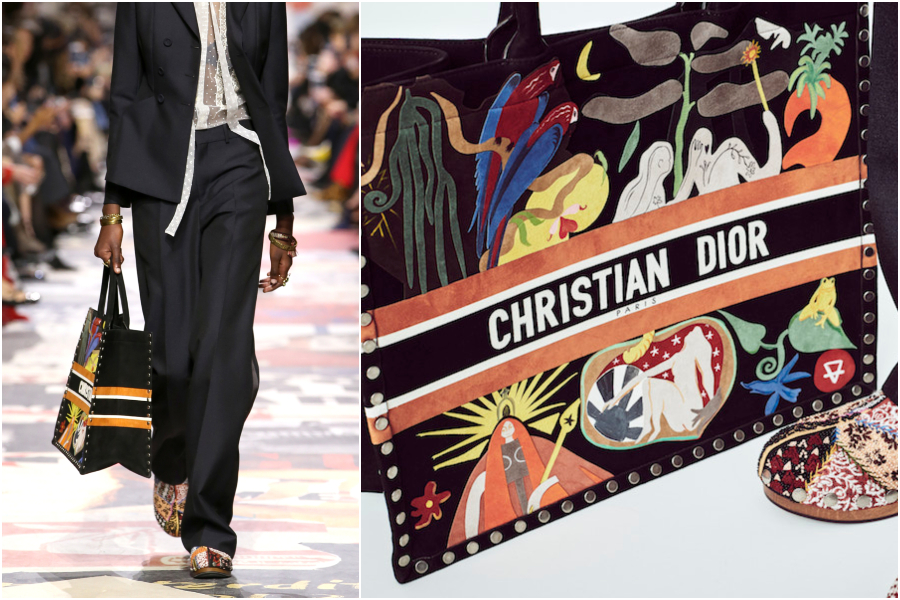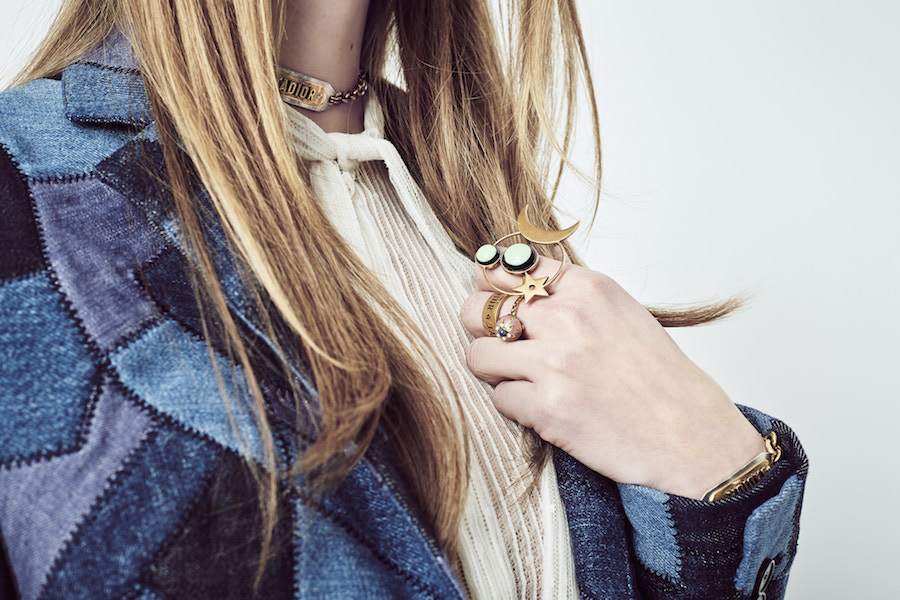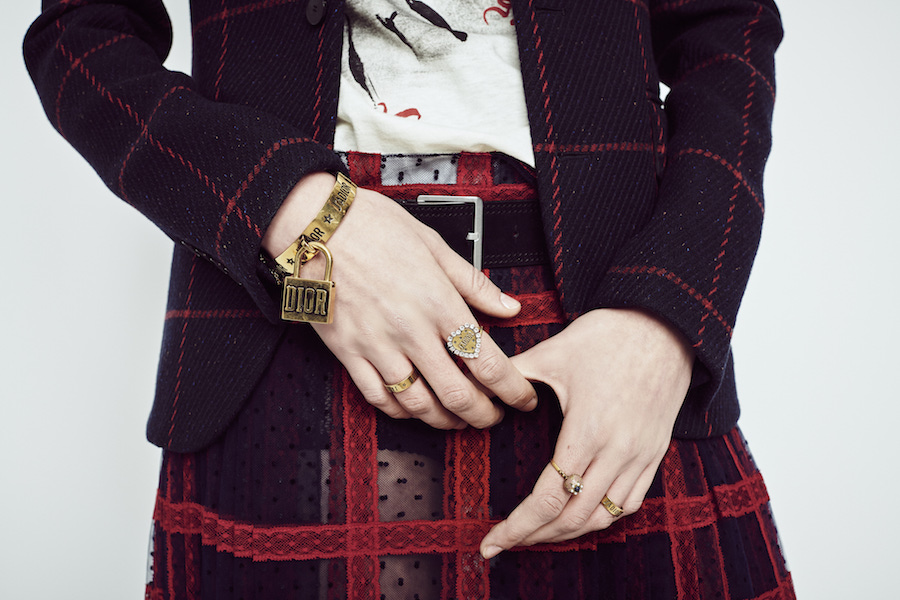France’s 1968 uprisings inspire artistic director Maria Grazia Chiuri to make some bold fashion statements.
This new fashion season has seen the current political statements, such as the #TimesUp and #MeToo movements influence the discerning style choices for today’s savvy women. But one of the strongest feminist messages came from Dior’s first female artistic director, Maria Grazia Chiuri, when she sent the brand’s show-opening fave (Brit model Ruth Bell) down the runway in the a woolly jumper with the slogan,“C’est non non non et NON!” (French for “It’s no no no and NO!”).
This is Chiuri’s 10th collection for the French maison, and advocating her feminist ethos since her Dior debut has been de rigeuer for the 54-year-old Italian designer.
Her Spring/Summer 2017 ready-to-wear collection recalled the coveted faded white tees, which were emblazoned with the infamous slogan by the Nigerian author Chimamanda Ngozi Adichie’s book of the same title, We Should All Be Feminists; while the Spring/Summer 2018 Ready To Wear collection championed art historian Linda Nochlin’s influential and thought-provoking essay: Why Have There Been No Great Women Artists?
We Are Young, We Are Free
This season, Chiuri turned to the voice of the people to chant her clothing slogans.
Upon visiting a Roman exhibition, which recounted the events of the Paris student protests in 1968, Chiuri went on a quest to uncover the going-ons at the Maison during this same period.
Further research led the astute artistic director to a discovery of a black-and-white photograph, which depicted young women protesting outside the Dior boutique on 12 September 1966. Dressed in miniskirts, these women proudly held placards that proclaimed the message, “Mini Skirts Forever”.
Marc Bohan was the creative director helming the French house at that time and had succeeded his prolific predecessor Yves Saint Laurent in 1960. Known for refining the lines, as well as lengthening the Dior silhouette, which gave birth to the iconic Slim Look, it is no wonder Bohan was faulted by these protestors for failing to offer women the sassy short hemlines they craved for during that time.
But the French designer, also known to be sensitive to social change and its demands, did listen. In 1967, he launched the Maison’s Miss Dior line. “…A line of fashion that was upbeat, easy to wear, and in step with the social and aesthetic revolution that saw the emancipation of women and youth,” the French brand quoted in Dior Mag.
Enter the Suits
Paying attention to the needs of young consumers, Chiuri too had placed focus on a more effortless silhouette for this collection. For starters, she shed the classic but constrictive hourglass appeal of Dior’s signature bar jacket and replaced it with a boyish-cut and more collegiate-worthy blazer.
Offering them in both variants of skirt and pant suits, these fuss-free outfit toppers came in permutations of dark, plain fabrics to window pane checks on wool. There was even a rendition of boho-inspired patchwork, in the form of reproduced archival Dior prints.
The Future of Denim
One of the colours, or for that matter, fabric which Chiuri has fondly used in many of her collections is blue denim. Her Fall/Winter 2017-18 Ready-to-Wear collection was an ode to this crowd-pleasing colour and fabric and she showed its evergreen versatility ranging from casual daywear to red carpet-ready gowns.
In this collection, Grazia Chiuri highlighted the hippie chic of patchwork denim, and to give it a good measure of modernity, paired it with metallic silver for some looks, while others saw strict touch of military disciplines to laidback shearling and shag.
Art Class
The meticulous detail of the aforementioned patchwork jacket carried through into a couple of dresses, as well as a pair of loose-fit trousers. Teamed with leather doily-style collars (for the dresses), these works of art evoked a bespoke and artisanal flavour more than it did a homemade project, which is so often associated with patchwork fashion.
Other crafty styles included Summer of Love-inspired crotchet dresses, which for modesty purposes were stylishly paired with itsy-bitsy knitted shorts and matching triangle bikini tops.
Frock & Roll
Some of the most sought-after pieces from all of Chiuri’s Dior collections are her feminine dresses. The Sixties social revolution theme in this collection saw the designer offer a wide range of bohemian-esque dresses, some of which reminisced the nymph-like prettiness of Ossie Clark/Celia Britwell’s circa Sixties creations. In mostly below-the-knee lengths for day dresses, they were woven to mimic printed patchworked panels.
There were also the sheer dresses that supported Chiuri’s love for the transparency trend, which she often paired with sporty, boyish underwear. This time, these sexy numbers came in the form of see-through maxi dresses trimmed with girlish ruffle panels, and they segued into two Little House On The Prairie-inspired peasant-style dresses, which also saw the modern juxtapositions of girlish dresses with boy-style undergarments.
For evening, the designer played up the luxe factor with detailed embroidery on organza dresses. Done with equal parts dressiness and understated glam, they lent a sense of newness that championed an elegant and unrestrained yet non-contrived chic.
Accessory Report
Accessories are the fastest moving category for most designer labels and the trick in bestowing each item with its coveted status label is to make the piece fun, colourful and most of all, youthful. Grazia Chiuri is a whiz in this area and often combines a myriad of cultural references with newfangled themes for added street cred.
One of the key accessories is the return of the Dior Saddle bag in permutations of the classic Dior Oblique monogramme to ornately beaded styles, reminiscent of Native American crafts. These embellished beauties were updated with the new CD hardware and trimmed with artsy ethnic-style bag straps, which resembled guitar slings.
In addition, the iconic Lady Dior was also given the crafty, detailed treatment.
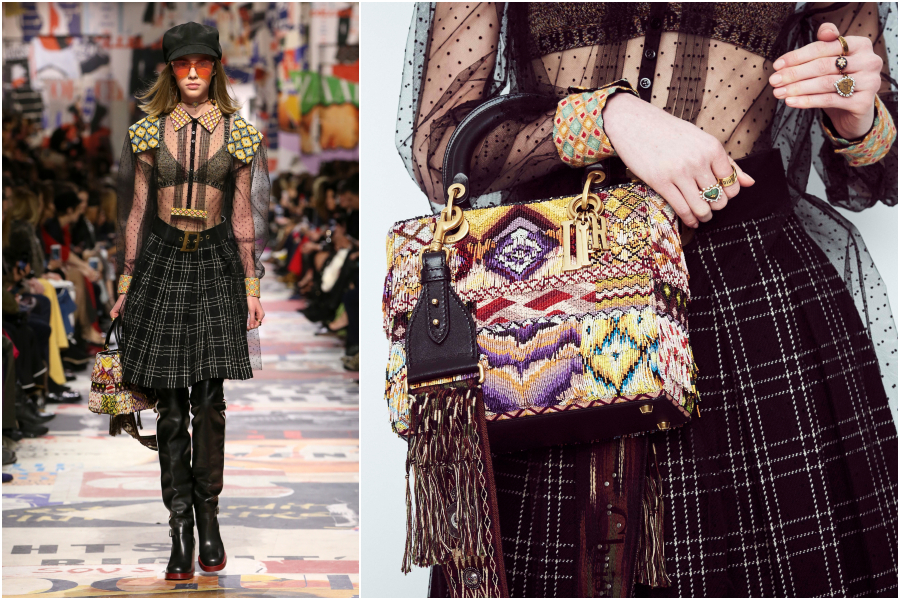
Chiuri also went for an odd but otherwise expected choice for the footwear range. A common styling juxtaposition she’s known for, Chiuri picked for this collection, the biker-style boot and chunky clogs to complement her girlish frocks. In all fairness, the team-up conveyed a cool, devil-may-care insouciance that was more snazzy than man-repelling.
The Book Tote bag made a grand appearance in two new styles: A suede calfskin (rendered in a marquetry technique with hand-painted details), as well as a tapestry-inspired option executed by way of multi-coloured embroidery on canvas.
Sunglasses borrowed a leaf from Woodstock by way of colour-tinted lenses for the Diorcolorquake1 range, while costume jewellery varied from corded friendship bracelets (bearing the Christian Dior label – no less!) to tiny trinkets, which paid homage to Monsieur Dior’s passion for astrology and zodiac mythology.
Related links:
9 Major Fall-Winter 2018/9 Trends Fashion’s Talking About Now
6 Things To Know About the Dior Saddle Bag

